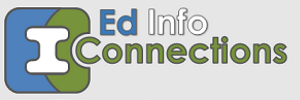This is an extract from one of the chapters of my upcoming book titled: The Educational Data Movement: Crossing Boundaries, Searching for Student Success.
One of the greatest challenges of our time—of research, of school leadership, and now of measurement—is to define teaching or what teaching should be. The educational data movement occurs at time when there is great uncertainty about what it means to teach. The types of changes that education is going through, as other fields have before, impact jobs and roles and organizational structures. During this time, there has been a quest to describe the job of teachers in ways that can be used to compare teaching with other types of professions. The definition of teaching is an important factor in how we consider teachers using data in their jobs. Is their work mechanical to transmit knowledge or are they knowledge workers and knowledge creators? These are the kinds of questions that highlight what makes education different from other fields.
People with different backgrounds often see different things when they look at these adults who spend their days with children. Teachers are seen as alternatively as caretakers, agents to deliver instructional content, experts to guide students and model for them what it means to be a user of language or pursuer of questions, low-skilled service providers, craftspeople, artists, and as managers who perform complex creative work. Some have drawn comparisons of teachers to athletes, who combine talent and practice, play on teams, and perform better some years than others; to doctors and therapists, who are highly trained professionals and help improve the lives of their clients; to authority figures like ministers and clergy; and to public servants. Teachers also become like family members for some students who need emotional support and encouragement scarce outside of school.
While a teacher might be able to describe how he or she approaches the job, many teachers struggle with a broad and generalized definition of teaching. Having been with teachers many times in my education and work I have found that they can often only adequately describe what their teaching is like; the tools and techniques they use and what they believe guides their actions. Ask them to define teaching generally and the conversation is far less specific. Many defer to a belief that their teacher colleagues should have the ability to approach teaching in different ways with autonomy. Autonomy has often been the recommendation of teachers unions. It is part of many school cultures to think of classrooms as self contained; to trust that other teachers will manage their classrooms without others needing to know details about what goes on inside.
Almost all of what we know and expect about teaching is influenced by how we have seen teachers work in front of a group of students and in a classroom. I refer to this as the classical model of teaching. Unlike 30 years ago there is now a research base that describes the kinds of classroom actions that teachers make in many situations. There are large video libraries of teachers in the United States and around the world that provide examples for study. However, most of the large scale datasets, whether video records or other forms of data, are built around this classical model. It is a lens that is easy to apply to education when framing research, policy, and advocacy agendas. However, this model should not be viewed as either the totality of education that exists today nor what education can be in the future. One of the most important lessons from how other fields have used technology is that it can help change organizational structures as well as improve individual productivity. So that while there is great interest in teachers using data and data about teacher performance, these questions leave unaddressed the fundamental nature of the role of teachers and the designs of schools. Chapter 7 will revisit this issue.
*** The issue of a classical model for teaching relates directly to new technologies that support blended learning and personalized learning because the role of the teacher is what the school is built around. While the classical model may be the best approach in some or most cases, the case for that (or against it) is not clear today as so little research has been done. What is different about the current time from the many different waves of new schooling and new technology approaches that have come and gone is that there are now technologies that can support both the work in classrooms and in school management that might work together to support new organizational designs.

Leave a Reply